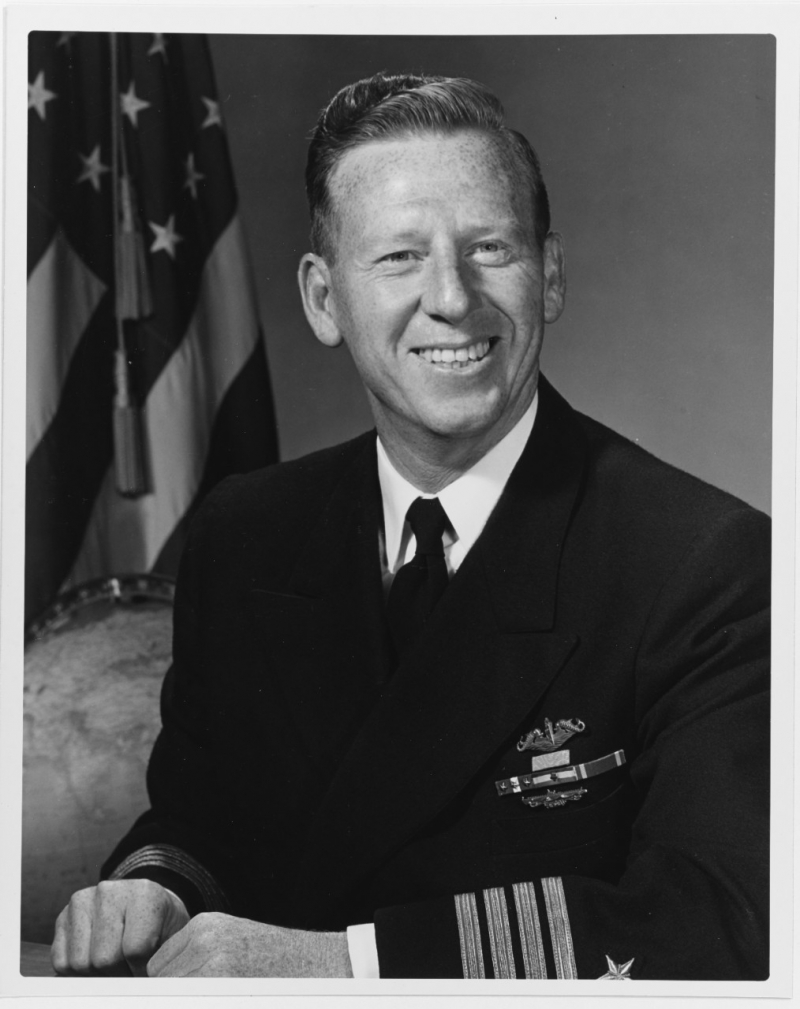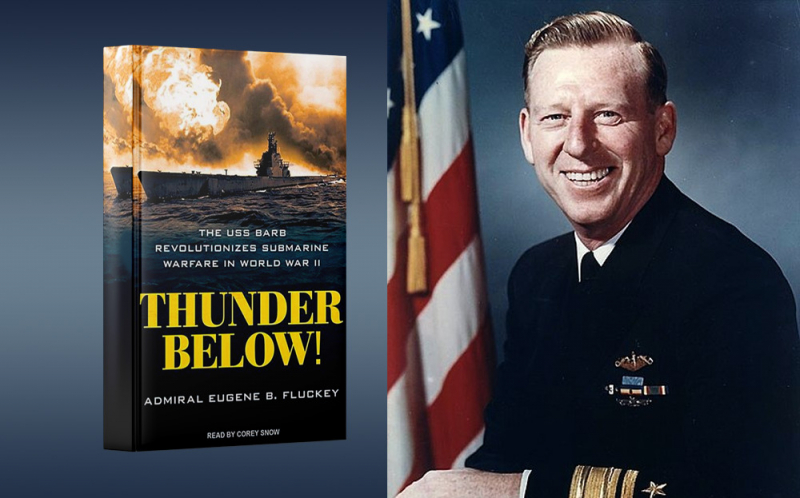Eugene Fluckey
Eugene Fluckey graduated from Annapolis in 1935 and entered the submarine service in 1938. When World War II broke out, he was posted aboard the USS Bonita, where he completed five war patrols before being assigned to command the USS Barb, SS-220. Fluckey led the submarine on seven war patrols from March 1944 to the conclusion of the war in August 1945.
On one instance, Fluckey landed a group of troops on the Japanese home islands, accusing them of destroying a train. Fluckey received four Navy Crosses and the Medal of Honor while commanding the USS Barb. Following an attack on a Japanese convoy in 1945, Barb achieved a submarine speed record of 23.5 knots as he escaped from pursuing Japanese destroyers. Following the war, he remained in the Navy, retiring as a Rear Admiral in 1972. In 1992, he published Thunder Below!, a well-received book about the combat patrols onboard the Barb.
In June and July 1945, Fluckey commanded the Barb, the first submarine to use rockets against the enemy, bombarding targets in Japan. As a result, he was instrumental in ushering in an entirely new use of the submarine in warfare. Nuclear submarines now carry both ballistic missiles and cruise missiles for use against land and sea targets.
- Date/place of birth: October 5, 1913, Washington, D.C., USA
- Date of death: June 28, 2007, Annapolis, Maryland, USA
- Awards: Navy Cross, Navy Distinguished Service Medal, Legion of Merit
- Sink more than 179,700 tons of ships (25 ships)












